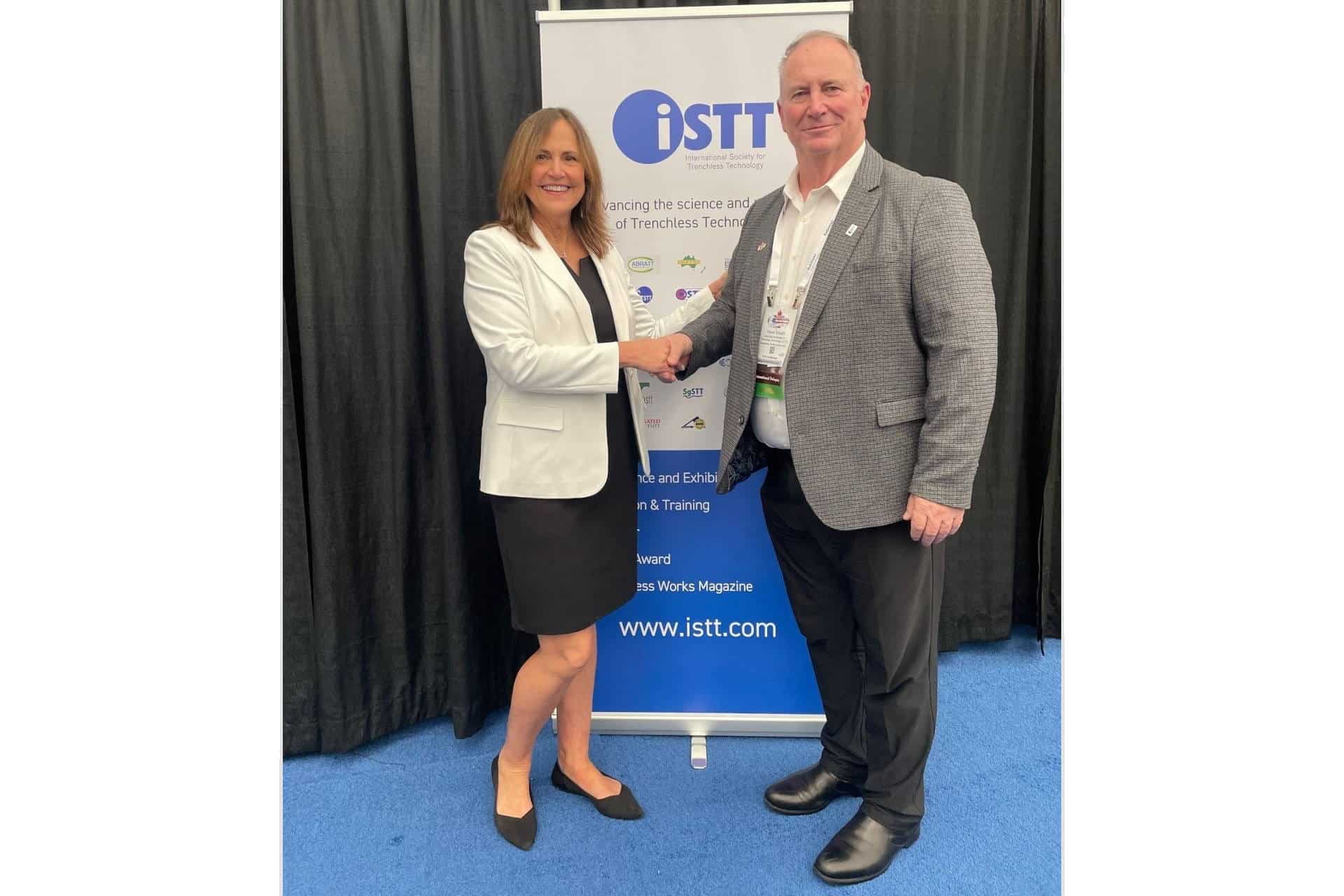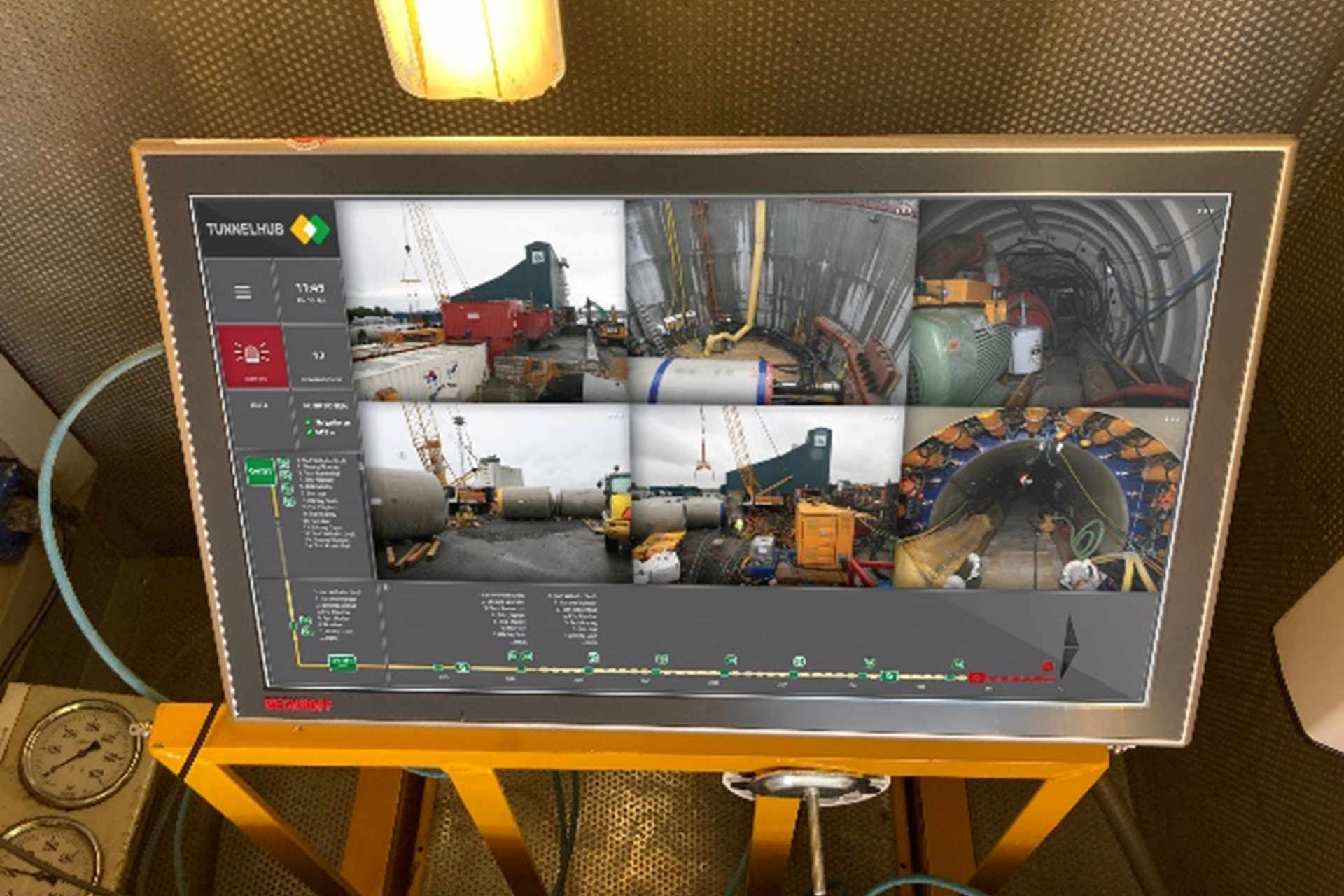Going Global
July 1, 2008
 For better than 50 years, The Robbins Co. name has been synonymous with boring through hard rock. Countless projects and successes around the globe have set the company’s reputation in stone. The Robbins Co. designed and manufactured the first hard rock, open-type tunnel boring machine (TBM), as well as the first double shield TBMs. Though the company is known for supplying some of the largest TBMs in the world, it has added to its catalog a variety of internationally-available, small diameter tunneling equipment. In so doing, Robbins is burning the hard rock candle at both ends, so to speak.
For better than 50 years, The Robbins Co. name has been synonymous with boring through hard rock. Countless projects and successes around the globe have set the company’s reputation in stone. The Robbins Co. designed and manufactured the first hard rock, open-type tunnel boring machine (TBM), as well as the first double shield TBMs. Though the company is known for supplying some of the largest TBMs in the world, it has added to its catalog a variety of internationally-available, small diameter tunneling equipment. In so doing, Robbins is burning the hard rock candle at both ends, so to speak.Formed in March 2007, the SBU Division is a part of The Robbins Co. focused on providing small diameter boring equipment to markets around the world. SBUs have been completing small bores in the United States since 1996, but by forming a new division, Robbins is positioned to address the need for small diameter boring equipment in emerging international markets such as India and the Middle East. The recent addition of both international SBU representation and service centers provides easier access to local contractors, while the company is customizing its inventories to address specific international needs.
SBU History
The SBU came about like many innovations in underground construction do — as a solution to a problem. In 1996, while excavating a 36-in. tunnel in hard rock as part of work on the Pennsylvania Turnpike, crews from John Fithian Contracting Co. of Youngstown, Ohio, got into some rock that proved too tough for the carbide bit Christmas tree head on their auger boring machine. Facing an impasse, Fithian brought the problem to Robbins and the device that would ultimately become the staple of the SBU line completed the drive in less than one week.
Recognizing its potential in the auger boring market, Robbins tweaked the SBU design and targeted auger boring contractors as early adaptors. The first wave of SBUs was known as the SBU-A, the A referencing its deployment as an attachment to an auger boring rig. SBUs carved a niche in the auger boring market, allowing contractors to use existing equipment to bore in rock from 25 to more than 175 MPa UCS using disc cutter technology.
“We used our first SBU on a tough job with multiple crossings,” says Jason Miller, vice president of Midwest Mole. “To say the least, we saw the light.”
Midwest Mole became an early convert and now owns three Robbins SBU Division products and has rented several others. “They do such a good job. We’ve been able to pursue work we’d have otherwise been unable to,” Miller says. “With demand increasing in the marketplace, we’re well-equipped to tackle hard rock bores.”
Developing Technology
As the market responded to the technology, Robbins developed specialized equipment capable of completing more complex projects. The Motorized SBU (SBU-M), in diameters from 1.2 to 1.8 m, is specialized for line- and grade-critical bores such as gravity sewers. The SBU-M incorporates an internal motor for high torque, allowing for longer bores of up to 200 m (compared to the normal SBU-A drive of around 100 m). The machine is continuously steered from an in-shield operator’s console, while a laser targeting system allows for monitoring of line and grade throughout the drive. Muck is removed using an invert auger.
For even longer bores (up to 600 m) in difficult ground conditions, the Rockhead (SBU-RH) was developed. The Rockhead, in diameters from 1.5 to 1.8 m, can be designed as either a single shield (SBU-RHSS) or double shield (SBU-RHDS) machine. Double shield machines are self-propelled using a gripper system, while single shield machines may be used with a pipe-jacking system or other primary liners. Like the SBU-M, the Rockhead utilizes an internal motor for torque and offers continuous steering using articulation cylinders. Muck is removed using either an invert auger or muck cars.
Contractors were still requesting machines capable of boring longer tunnels in more difficult ground conditions, however. To meet these demands, Robbins introduced the SBU-DS — a small diameter (2 to 3 m) TBM capable of completing utility tunnels of up to 5 km. A ring bearing and bull gear drive enable larger diameter 17-in. disc cutters to be used, allowing greater thrust and higher torque to be used. The resulting design can excavate rock up to 300 MPa UCS.
Boring a Place of Its Own
The Robbins Co. is expanding its reach for smaller diameter equipment from the United States to emerging markets including India, the Middle East and South America. To meet these challenges, U.S. and international sales managers have been introduced, along with international representation and service centers.
The specialized SBU market requires that the company keep its small diameter and large diameter machines separate, however. Though SBUs and TBMs employ similar technology, most contractors and companies are not familiar with both. “In the TBM world, the businesses are very project-oriented, with large international contractors performing work mainly in the transport and hydro industries,” explains Paul Nicholas, SBU Division general manager and international sales manager for The Robbins Co. “The SBU Division’s customer is not project-oriented. Rather it’s a small- to mid-size contractor performing primarily utility work. The proper market for the SBU product wasn’t being served in Robbins former configuration.”
Robbins is establishing international specialist SBU representatives to strengthen the regional familiarity and supply of SBU products. “American contractors often make their technology decisions on the jobsite, when they open up the ground and see rock. International contractors are no different—it’s just a matter of reaching local contractors and letting them know the technology is out there,” explains Tom Fuerst of The Robbins Co., operations andsales manager-the Americas. SBU representation currently covers more than 10 European and Eastern European countries, as well as Brazil, India and Australia.
In addition to representation, global service centers currently in operation or planning stages will provide maintenance and supply of machines to specific regions. Most service centers will be part of Robbins’ TBM workshops and will be located in China, India and Europe, as well as the United States.
Global Deployment
To provide solutions to specific regional markets, Robbins is building its inventory to match the unique challenges of projects. For example, the use and familiarity of auger boring machines is far higher in the United States than the rest of the world, where pipe jacking systems are considered the standard. Robbins is therefore beefing up its inventory of pipe jacking compatible-machines such as SBU-Ms and Rockheads.
A recent project in South Wales, United Kingdom, utilized ABMs and pipe jacking equipment to successfully excavate 54 crossings on an expansive natural gas pipeline. Contractor B & W Tunnelling utilized two SBU-Ms and two SBU-As to complete the crossings. “We needed an increased degree of accuracy and felt the most confident with the SBU-M,” says B&W managing director Steve Williams. Rockheads may additionally prove even more versatile in the international market, as they can be readily used with several types of pipe and in situ tunnel liners, such as reinforced concrete, steel casing and steel liner plates erected in the tailskin of the machine.
An even bigger challenge lies in markets where customers must be familiarized not only with the efficacy of SBU technology, but with mechanized underground construction in general. For example, India’s utility industry has only recently accepted some types of mechanized tunneling in soft ground. In hard rock, however, hand mining remains the standard.
“Hand-mining through hard rock in India is yielding advance rates of just 200 to 300 mm per day. Our aim is to work with local contractors to bring more efficient SBU technology to hard rock jobs,” says Nicholas.
With no built-in auger-boring market into which to sell, Robbins offers SBU packages (SBU-ABM or SBU-PJS), which include the SBU head with the auger boring machine (or in the case of the PJS, a pipe jacking system) as a turn-key solution for hard rock areas. SBU advance rates are in the neighborhood of 6 m per day, some 20 to 30 times hand mining rates. Simple math indicates what should be a willing market for the technology.
Robbins recently sold its first SBU-ABM in India — a 1,500-mm unit — for work in Rajasthan.
Future Breakthroughs
Robbins is working on technology to better suit certain conditions, including working below the water table and in mixed ground containing cobbles and boulders. In the last few years, the division has seen increased successes in mixed ground conditions, such as in Toronto and in the western United States. The division has developed mixed ground cutterheads customized for all SBU machines for use in several types of mixed ground. Utilizing a variety of carbide and disc cutting tools, the cutterheads are combined with larger muck openings to ingest boulders. “The overall goal of these designs is to bring low-cost solutions for installing pipe in a wide variety of conditions,” says Fuerst.
The company sees the future as a promising one and seeks to reinforce its reputation as a world leader in the trenchless market. “We are looking to expand the SBU Division in two main directions in the next five years,” says Lok Home, president of The Robbins Co. “We want to increase our international and domestic scope for short bores and non-slurry machines, and we are looking to expand into the slurry market as well.”
Greg Thompson is an assistant editor of Trenchless Technology.




